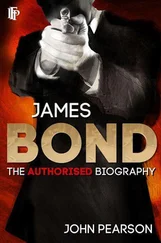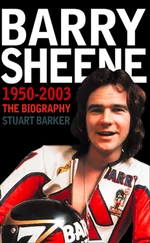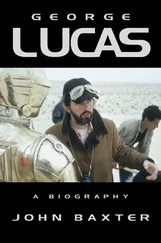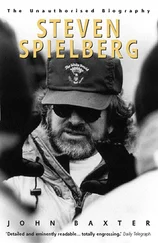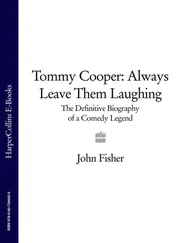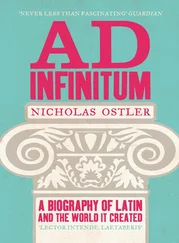De Niro
Cover
Title Page De Niro
1 The Last Actor Alive
2 New York
3 My Father’s Business
4 Stella
5 Sally, Candy, Andy and the Others
6 Shelley and the Boys
7 The Year of the Turkey
8 Boyz of the ’Hood
9 An Offer You Can’t Refuse
10 Sleepless
11 If You Can Make it There …
12 Going for a Soldier
13 Jake
14 A Harp with Class
15 The Epic that Never Was
16 The South American Picture
17 Falling Angel
18 The Man Upstairs
19 A Made Man
20 Rabbit in a Maze
21 In Cop Land
22 Ageing Bull
Filmography
Index
Acknowledgments
About the Author
Also by the Author
Copyright
About the Publisher
CHAPTER ONE The Last Actor Alive
Player (lost): There we were – demented children mincing about in clothes that no one ever wore, speaking as no man ever spoke, swearing love in wigs and rhymed couplets, killing each other with wooden swords, hollow protestations of faith hurled after empty promises of vengeance – and every gesture, every pose, vanishing into the thin unpopulated air. We ransomed our dignity to the clouds, and the uncomprehending birds listened. (He rounds on them) Don’t you see?! We’re actors – we’re the opposite of people!
Tom Stoppard, Rosencrantz and Guildenstern are Dead
Valentine’s Day, 14 February 1989.
From the offices along the Strip of Sunset Boulevard, there’s a classic LA view. No palms, no lawns, no art moderne architecture; leave those to the glitzier residential suburbs closer to the Pacific: Beverly Hills, Westwood, Santa Monica.
Here, in the DMZ between Beverly Hills and Hollywood, everything is commerce. The very light and air are for sale – perhaps the only things Hollywood has to sell.
Film interfaces with the record business. The monuments are all to bad taste and the hard sell. Tonight, in Bill Gazzarri’s Rock Club, with its self-aggrandising billboard portrait of its pouchy proprietor on the façade, and his boast of the groups launched here, the Hollywood porn-movie community is having its annual bash to present its Oscars, the Heart-Ons, with awards for Best Anal Love Scene and Best Blow Job.
But in Hollywood there’s always a gaudier image, a louder voice. Opposite, higher, brighter, more strident, a billboard has been erected for the personal junk-lit industry of Jackie Collins, author of Hollywood Husbands and Once is not Enough. Ten times larger than life, she glares out over her domain. Underneath her image is the rubric of her reign. More than a Hundred Million Sold.
At Hollywood’s smartest restaurants, Le Dôme and Spago, black stretch limos queue decorously to drop off their clients, then circle back into the dark. The drivers wait in empty parking lots, smoking and listening to the radio until the car phone burrs its summons.
One white chauffeured Cadillac limousine glides past Le Dôme, moving west on Sunset, heading for the 405 Freeway. LAX. The east.
In its air-conditioned hush, Robert De Niro takes a last look at Hollywood through smoky yellow glass. When he comes back, it will no longer be the same place.
It’s said that every performing artist has ten years in which to make his or her mark. By that standard, De Niro had succeeded better than most. From Taxi Driver and his Best Supporting Actor Academy Award for The Godfather II in 1975 to the acclaim for Awakenings in 1987, he’d taken twelve years to create the benchmarks against which every other screen actor of his generation needs to measure himself.
But now he is turning his back on all that, leaving the febrile society he has always affected to despise, but whose blandishments he can never quite resist.
He has already passed Tower Records’ gigantic Hollywood outlet, where anything that can be put on disc is for sale. He has passed On the Rox, the disco where he’d spent more than his share of white nights. He has passed below the Xanadu-like silhouette of the Château Marmont Hotel, in the grounds of which his friend John Belushi died.
As the sun sinks, Sunset comes alive with black leather, Spandex, studs. On Sunset Strip, the sidewalk is jammed with Harleys, and Porsches parked three-deep as, twittering like parakeets, the Valley Girls from Sherman Oaks and Encino, bums and tits compressed into tank tops and jeans tight and hard as lacquer, jostle for attention as they gather for a night of disco. Manes of moussed hair – male and female – shimmer in the streetlights, and down the gutters roll dusty skeins of tape from gutted cassettes. Sunset Tumbleweed.
Jackie’s billboard ignites, neon outlining the imperious Collins silhouette.
Showtime.
De Niro’s limo drives by, its passenger no longer noticing. He is forty-six, but feels ten years older. He has won the greatest honours his craft can bestow, but he believes himself without merit. He is returning to New York, where he thinks he belongs. But part of him knows he doesn’t really belong anywhere. Nobody is waiting for him in New York. Nothing is waiting for him – except work.
‘You travel a lot?’ the girl in the bookstore will ask.
‘Yeah,’ he’ll reply.
‘Does it make you lonely?’
‘I am alone,’ he will say mildly. ‘I’m not lonely.’
Sure, Bobby.
The big Cadillac undulates silkily as it rolls over a hump in the shifting surface of the slide area that is Hollywood, and glides into the warm and scented dark.
To talk about ‘performance’ in movies at the beginning of the twenty-first century is to discuss an art as fossilised as Egyptian wall painting. Jack Nicholson has rightly called himself a member of the last generation of film performers. Already, the ‘synthespians’ who will replace him are crowding on camera. Electronics routinely resuscitate actors who die in mid-production, and raise long-dead stars from the grave. Joe Dante’s threat in Gremlins II of an updated Casablanca , ‘in colour, and with a happier ending’, now sounds like next week’s Fox-TV programming. As for the science-fictional proposal that old films might be cleansed of politically incorrect activities like smoking, Steven Spielberg showed the way in 2002 with a sanitised E.T. in which agents’ guns became torches.
As he turns sixty, Robert De Niro, one of the most gifted screen performers of his generation, can be seen as also the last of a line in which he was already a throwback. Born a century too late, he belonged in the barnstorming theatre of the nineteenth and early twentieth centuries, the world of John Barrymore, Emil Jannings, Werner Krauss, Fritz Kortner. No six degrees of separation divide De Niro from a theatre of putty noses and crêpe hair, of rhetoric and speeches from the scaffold. Erwin Piscator of Berlin’s pamphleteering Communist pre-war Volksbühne theatre was a childhood friend, and his teacher, Stella Adler, came from the Theater Guild of the thirties and the nineteenth-century Yiddish theatre.
Born to perform in a theatre that no longer existed, De Niro crammed the djinn of his skill into the constricted bottle of the movies. Watching him writhe and grimace through the glass, audiences imagined they were seeing great acting, when in fact they were watching great acting distorted.
‘These days,’ writes the British playwright and actor Alan Bennett, ‘what the public calls Great Acting is often not even good acting. It’s acting with a line around it, acting in inverted commas, acting which shows. The popular idea of Great Acting is a rhetorical performance (award-winning for choice) at the extremes, preferably the extremes of degradation and despair. Such a performance seems to the public to require all an actor has got. Actors know that this is a false assessment. The limit of an actor’s ability is a spacious and fairly comfortable place to be; such parts require energy rather than judgment. Anything goes.’
Читать дальше

